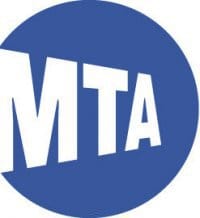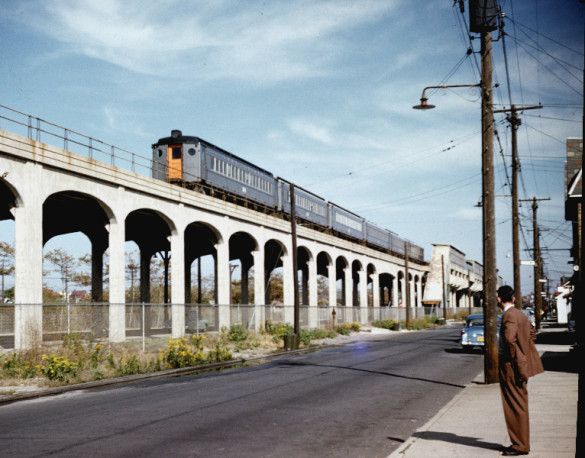The Commute: The Time For Reactivation Of The Rockaway Beach Line Is Now


THE COMMUTE: Now that Queens College has released its year-long study of the feasibility to rebuild and reactivate the long dormant Rockaway Beach Line between Rego Park and Howard Beach, momentum to reuse the line for transit purposes is gaining traction. The New York Daily News is now a supporter. Other alternatives include the building of a High Line-style park named “Queensway,” and doing nothing. According to the study, restoration would cost between $600 and $900 million and would generate as many as 500,000 daily riders.
Reactivation of the line is supported by Assemblyman Philip Goldfeder, Congress Members Gregory Meeks, Hakeem Jeffries, and Jerrold Nadler (the latter a member of the Congressional Subcommittee on Highways and Transit), as well as Councilman Ydanis Rodriguez (chairman of the Council Committee on Transportation), the Iron Workers Union, and TWU Local 100, among others. You can read arguments on both sides of the issue here. Another possibility is to do both, but that may be prohibitively expensive. The Times Newsweekly, based in Ridgewood Queens, strongly supported rail reactivation in their recent editorial.
I intended to give the following testimony on November 3, when the City Council heard testimony from NYC DOT on their decision to implement SBS on Woodhaven Boulevard. DOT Commissioner Polly Trottenberg also indicated that if funds were available, full-fledged BRT costing at least $200,000 would be implemented instead. The difference, which few understand, is that BRT would be in effect at all times. Cars would not be able to use bus lanes to make right turns as they currently can do with SBS exclusive lanes because there would be physical separation of the bus lanes. SBS lanes are in effect only Monday through Friday between 7am and 7pm, or during rush hours going in the peak direction.
On weekdays, 68 percent of the vehicles people using Woodhaven Boulevard are not in buses. On weekends, the number is most likely much higher, negating the need for exclusive bus lanes. After waiting more than three hours, since the New York City Council does not designate a specific time for the public to speak, I left and submitted the following testimony by email since only about half a dozen City Council members remained in attendance by 1:30pm. About 15 had already left by the time I departed. Below is my full testimony:
“Next to Staten Island, Queens has the worst public transit in the city. However, Queens is much more populated than Staten Island so the need for faster improved transit service is greatest in Queens. There are very limited subways in Queens; many rely on the buses and roadways to get around. If you are not near a subway, a short two-bus trip can take an hour. Many locations cannot even be reached using two buses because virtually all Queens’ bus routes are oriented to connect to subways, not to connect neighborhoods. Long bus trips requiring a combination of multiple buses and trains within Queens can take two or three hours.
The locations for job opportunities are severely limited and economic growth is stifled. What is the answer? We can dramatically improve north south travel in Queens by rebuilding the Rockaway Beach Line (RBL) for transit use between Rego Park and southern Queens, abandoned in 1962. This can be done at a fraction of the cost of a building a new subway with similar benefits. It could become the new Queens Crosstown.
However, the MTA has only played lip service to RBL reactivation. Instead they have focused all attention on Select Bus Service for the Woodhaven Boulevard Corridor. It appears that someone looked at Google Maps, saw a wide street, and determined it is perfect for SBS. However, good planning is much more than that. It also looks at the negatives and makes an assessment how well the solution solves the problem. It asks who are helped and who are hurt. It involves the communities in meaningful planning. It studies alternatives and looks at long-term costs and benefits. It responds to community concerns. None of that happened.
Instead, there was just an illusion of community input. Workshop leaders steered the discussions by asking leading questions to solicit specific responses. Contradictory statements were made such as Woodhaven Boulevard is the most congested corridor in Queens and that reducing road capacity will alleviate congestion. That is like saying reducing food consumption alleviates hunger. There was no opportunity for adequate questioning and discussion. Questions submitted by the Queens Transit Committee six months ago remain unanswered.
The city decided it would construct SBS on Woodhaven/Cross Bay Boulevards only asking the communities, which design they prefer. The RBL only one half mile to the east was ignored. The city could have at least studied the difference in cost between constructing BRT or SBS on the RBL instead of on Woodhaven. Even that was not done.
SBS works well in some places. It would not work well on Woodhaven Boulevard because during non-rush hours buses would save no more than five or ten minutes since they are already traveling at top speeds. The city also is contemplating lowering the speed limit on Woodhaven, which may result in no time saving at all.
There are no parallel arterial roadways to Woodhaven to compensate for the removed travel lanes. Woodhaven is the only truck route in the area and is not only used by locals. It is usually the best route between southern Brooklyn and northern Queens. Congesting it further will make it just as slow as the BQE and the Van Wyck alternatives. During non-rush hours you can drive for miles on Woodhaven and not see a bus. Exclusive bus lanes are not warranted.
Trip times for cars and trucks traveling the full length of Woodhaven would be increased by 20 or 30 minutes during rush hours, causing some drivers to shift to narrow parallel single lane residential streets increasing the number of accidents. Buses would save only five or 10 minutes during rush hours. Most likely more would be hurt than helped by converting general-purpose lanes into exclusive bus lanes.
The planning for this project has been so poor that the possibility of allowing HOV vehicles into the exclusive bus lanes to minimize the negative effects on auto traffic is not being considered. Plans call for eliminating additional left turns, which by itself would add five or 10 minutes to trips made by turning vehicles when traffic is heavy. Most left turns on Woodhaven are already banned because the road is over capacity. There is no mention of the number of trees that would have to be destroyed.
Not every trip can be made by bus. Have you ever tried hauling a piece of lumber on the bus? SBS will do nothing for trips presently requiring four or five transfers. That is precisely the reason people are currently driving. The needs of other users of the roadway must also be considered.
But wait! It doesn’t have to be that way. The RBL can be utilized for BRT, a higher form of SBS, or better yet, for rail, without strangling Woodhaven Boulevard in traffic and banning needed parking spaces. Yes, all the positives and more without any of the negatives. Rail significantly boosts property values. Bus service does not. Why shave off five or 10 minutes from your 90-minute trip with SBS when you could cut your trip in half with a rail line?
The time for a fair comparison of options is now — not after more than $200 million is committed for BRT. The RBL must never become Queensway, which will only be used by a couple of hundred daily bicycle riders during, perhaps, 150 days a year. The RBL would be used 365 days a year, greatly reducing travel times for thousands every hour.”
The Commute is a weekly feature highlighting news and information about the city’s mass transit system and transportation infrastructure. It is written by Allan Rosen, a Manhattan Beach resident and former Director of MTA/NYC Transit Bus Planning (1981).
Disclaimer: The above is an opinion column and may not represent the thoughts or position of Sheepshead Bites. Based upon their expertise in their respective fields, our columnists are responsible for fact-checking their own work, and their submissions are edited only for length, grammar and clarity. If you would like to submit an opinion piece or become a regularly featured contributor, please e-mail nberke [at] sheepsheadbites [dot] com.



